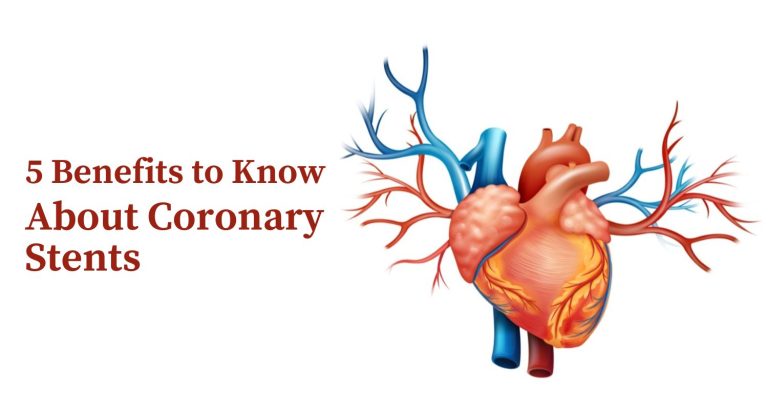Understanding Risk Factors of Heart Disease

Did you know that heart disease is the leading cause of death worldwide?
It accounts for over 17 million deaths annually, making it a global health crisis that demands our attention.
But what exactly are the risk factors of heart disease that contribute to the development of this life-threatening condition?
In this section, we will delve into the various risk factors of heart disease, providing you with a comprehensive understanding of the causes of heart disease.
By identifying and understanding these risk factors, you can take proactive steps to improve your cardiac health and reduce the chances of developing heart disease.
Key Takeaways:
Common Risk Factors of Heart Disease
The development of heart disease is influenced by several common risk factors. By recognizing and understanding these factors, individuals can make informed decisions about their lifestyle choices and take preventive measures to mitigate the risk factors of heart disease.
Modifiable Risk Factors:
- Smoking: Cigarette smoking significantly increases the risk of heart disease. Quitting smoking is crucial to reduce the chances of developing this condition.
- High Blood Pressure: Uncontrolled high blood pressure puts strain on the heart and arteries, increasing the risk of heart disease. Managing blood pressure through a healthy diet, exercise, and medication is essential.
- High Cholesterol: Elevated levels of cholesterol in the blood can lead to the buildup of fatty deposits in the arteries, narrowing the blood vessels and increasing the risk of heart disease. Adopting a heart-healthy diet and taking medication, if prescribed, can help manage cholesterol levels.
- Obesity: Excess body weight, particularly around the abdomen, is associated with an increased risk of heart disease. Maintaining a healthy weight through regular exercise and a balanced diet is crucial in reducing this risk.
- Physical Inactivity: A sedentary lifestyle can contribute to the development of heart disease. Engaging in regular physical activity, such as brisk walking, swimming, or cycling, can help maintain a healthy heart.
Non-modifiable Risk Factors:
- Age: The risk of heart disease increases with age. Men over 45 and women over 55 are more susceptible to developing this condition.
- Gender: Men are generally at a higher risk of heart disease than premenopausal women. However, women’s risk increases after menopause, equalizing with men.
- Family History: Individuals with a family history of heart disease, especially if it occurred at an early age, have a higher risk of developing the condition themselves.
By addressing modifiable risk factors through lifestyle changes and managing non-modifiable risk factors through awareness and regular check-ups, individuals can take proactive steps towards maintaining a healthy heart and reducing the likelihood of heart disease.
Symptoms and Diagnosis of Heart Disease
In this section, we will explore the various symptoms that may indicate the presence of heart disease. It is essential to recognize these symptoms as early detection can lead to timely diagnosis and appropriate treatment to prevent further complications.
Common Symptoms of Heart Disease Include:
- Chest Pain or Discomfort: This is one of the most common symptoms of heart disease. It can feel like pressure, tightness, fullness, or pain in the chest area.
- Shortness of Breath: Feeling breathless, especially during physical activities or at rest, can be a sign of heart disease.
- Fatigue: Unexplained fatigue or tiredness, even after a restful sleep, can indicate an underlying heart condition.
- Heart Palpitations: Irregular heartbeats or a racing sensation in the chest may suggest heart disease.
- Dizziness or Lightheadedness: Feeling dizzy or faint can be a symptom of inadequate blood flow to the brain due to heart problems.
- Swelling: Edema or fluid retention, commonly noticed in the feet, ankles, legs, or abdomen, can indicate heart disease.
Diagnosis of Heart Disease
To diagnose heart disease, healthcare professionals may employ a combination of diagnostic methods:
- Medical History: A thorough evaluation of an individual’s medical history, including symptoms, lifestyle factors, and family history, can provide valuable insights.
- Physical Examination: Healthcare providers may perform a physical examination to assess heart sounds, blood pressure, and signs of fluid retention.
- Blood Tests: Blood tests can measure cholesterol levels, inflammation markers, and other indicators to detect heart disease risk factors.
- Electrocardiogram (ECG): This non-invasive test records the electrical activity of the heart to identify abnormal rhythms or evidence of a previous heart attack.
- Echocardiogram: An echocardiogram uses sound waves to create images of the heart’s structure and function, helping to evaluate its overall health.
- Stress Tests: These tests measure heart function during physical exertion, helping doctors assess the heart’s response to stress.
- Cardiac Catheterization: Invasive procedures like cardiac catheterization may be necessary to obtain detailed images of blood flow and identify blockages or abnormalities.
By recognizing the symptoms and receiving a proper diagnosis, individuals can work closely with their healthcare providers to develop personalized treatment and management strategies, effectively managing heart disease and improving their quality of life.
Prevention and Treatment of Heart Disease
Individuals should focus on adopting various preventive measures to reduce the risk of heart disease and improve heart health.
These measures include:
- A Heart-Healthy Diet: Consuming a well-balanced diet that is low in saturated fats, cholesterol, and sodium can help prevent heart disease. Include plenty of fruits, vegetables, whole grains, lean proteins, and healthy fats in your meals.
- Regular Exercise: Engaging in physical activity for at least 150 minutes per week can significantly reduce the risk of heart disease. Incorporate activities such as walking, jogging, swimming, or cycling into your routine.
- Stress Management: Chronic stress can contribute to the development of heart disease. Practice stress-reducing techniques such as meditation, deep breathing exercises, yoga, or engaging in hobbies you enjoy.
- Smoking Cessation: Quitting smoking is essential for heart health. Seek support from healthcare professionals or join smoking cessation programs to quit smoking successfully.
Furthermore, it is important to understand the treatment options available for heart disease.
These can include:
- Medication: Depending on the severity and type of heart disease, medications such as beta-blockers, statins, or antiplatelet drugs may be prescribed to manage the condition and reduce the risk of complications.
- Surgical Interventions: In some cases, surgical procedures may be necessary to treat heart disease. These can include angioplasty, bypass surgery, or the implantation of devices such as pacemakers or stents.
- Lifestyle Changes: Making lifestyle changes, such as maintaining a healthy weight, managing blood pressure and cholesterol levels, and regularly monitoring heart health, can significantly improve the overall prognosis and quality of life for individuals with heart disease.
By understanding these prevention and treatment approaches and implementing them into daily life, individuals can actively protect their heart health, reduce the risk of heart disease, and improve their overall well-being.
Conclusion
In conclusion, heart disease is a prevalent condition that poses significant health risks if not addressed promptly. The understanding of the risk factors of heart disease is paramount in taking proactive measures to reduce their impact.
By recognizing and addressing modifiable risk factors such as smoking, high blood pressure, high cholesterol, obesity, and physical inactivity, individuals can actively minimize their chances of developing this condition.
It is essential to prioritize heart health through regular check-ups and screenings to detect any potential signs of heart disease.
Incorporating healthy lifestyle choices, including a heart-healthy diet, regular exercise, stress management, and smoking cessation, can significantly improve cardiac well-being and reduce the likelihood of heart disease development.
Seeking appropriate medical care and guidance when needed is crucial for managing risk factors of heart disease effectively.
By staying proactive and informed, individuals can pave the way for a healthier future by taking control of their heart health and minimizing the overall impact of heart disease on their lives.
Risk Factors of Heart Disease – Frequently Asked Questions (FAQs)
What are the common risk factors of heart disease?
Common risk factors of heart disease include smoking, high blood pressure, high cholesterol, obesity, physical inactivity, age, gender, and family history. Recognizing these factors helps individuals make informed lifestyle choices to reduce the risk of heart disease.
What are the symptoms of heart disease?
Symptoms of heart disease may include chest pain, shortness of breath, fatigue, dizziness, palpitations, and swelling in the legs. Some individuals may not experience any symptoms. Consulting a healthcare professional is recommended if experiencing concerning symptoms.
How is heart disease diagnosed?
Heart disease diagnosis involves various methods like physical examination, medical history assessment, blood tests, ECG, stress test, echocardiogram, cardiac catheterization, and coronary angiography to evaluate its presence and severity.
How can heart disease be prevented?
Preventing heart disease involves maintaining a heart-healthy lifestyle with a balanced diet, regular physical activity, healthy weight management, stress reduction, avoiding tobacco and excessive alcohol, managing blood pressure, diabetes, and high cholesterol, and regular check-ups for early detection.
What are the treatment options for heart disease?
Treatment options for heart disease include lifestyle modifications, medications, surgical interventions like angioplasty or bypass surgery, and cardiac rehabilitation programs tailored to individual conditions and severity.
How can I improve my heart health?
Improving heart health requires adopting a heart-healthy lifestyle with a balanced diet, regular exercise, stress management, avoiding tobacco, managing risk factors like blood pressure, cholesterol, and blood sugar levels, and regular check-ups with healthcare professionals.
Disclaimer: This content, including advice, provides generic information only. It is not a substitute for a qualified medical opinion. Always consult a specialist or your doctor for more information. Ingredient Fact does not claim responsibility for this information.






